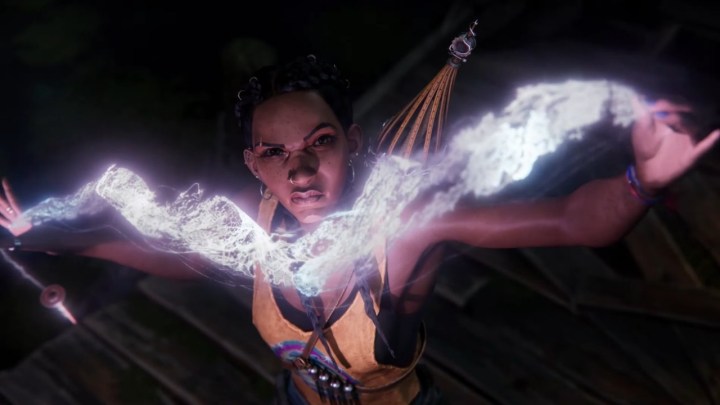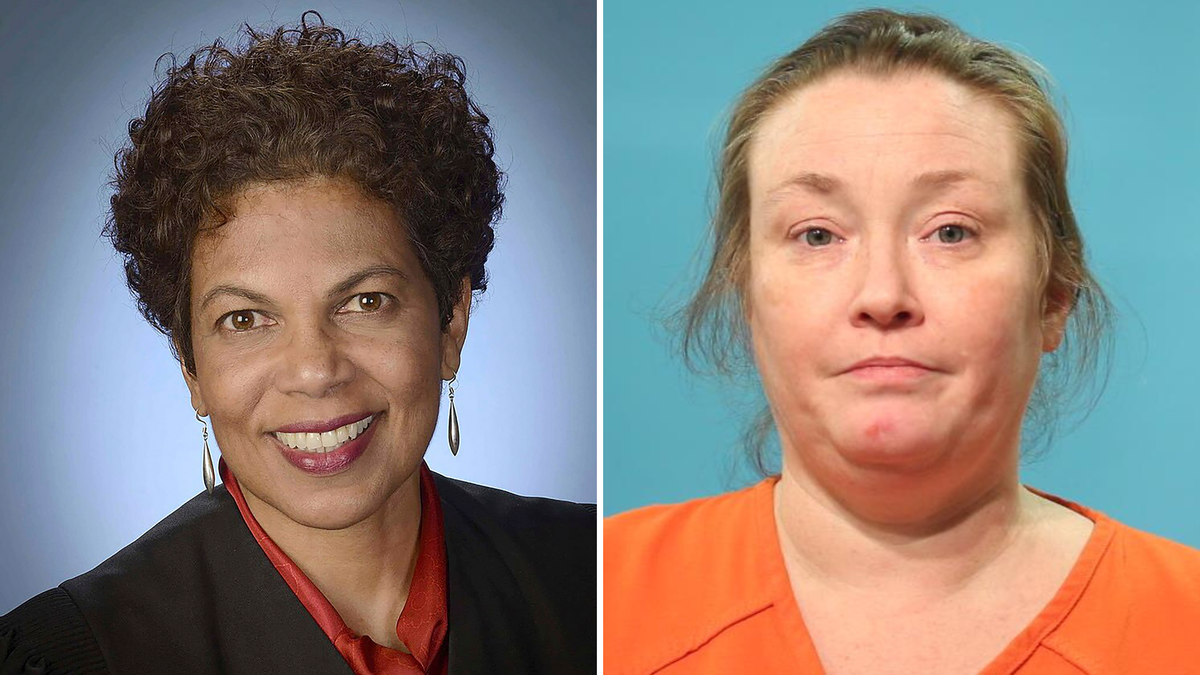More Black video game heroes shouldn’t be a fantasy
By
DeAngelo EppsAugust 19, 2023 3:00AM
SHARE
https://policies.google.com/privacy
Listen to article14 minutes
As a Black youth back in the early 2000s, I became an avid gamer after being introduced to Sonic the Hedgehog on the Sega Genesis. From there, I fell in love with nearly every game under the sun, discovering as many as I could. But it was my uncle who would really change my life forever when he showed me my first RPG in
Final Fantasy 7 and bought me
Kingdom Hearts. So imagine my excitement when I got to see Black characters like Barret on-screen in a heroic RPG. Sure, I’d seen Black characters in games before thanks to the beat ’em up and fighting game genres, but I was thrilled to see them in a genre where the closest thing to people of my complexion was the Black Mage. It opened my young mind to how invisible I was in so much of gaming.
CONTENTS
Flash forward to today and you might understand why people like me were so disappointed when
Final Fantasy XVI producer Naoki Yoshida argued that the RPG didn’t include Black characters for the sake of maintaining “realism” in its European-inspired setting. It felt like a poorly argued step back, though it’s not exactly an outlier in the broader industry. While video games have continued to evolve and open themselves up to new audiences through more diverse representation, many of today’s biggest games from all around the world still tend to treat white male heroes as the “default” option.
It’s a problem that’s always been at the forefront of the entertainment industry, though Yoshida’s comments reopened gaming’s wound this year. The issue
lay in cases like that of Final Fantasy XVI, which isn’t too big of a problem on its own. It becomes a more pressing concern, though, when compounded with decades of examples just like it. The recurring nature of the problem is emblematic of larger representation issues in gaming — ones that are about who gets to make games rather than what fictional characters look like on screen.
The problem
Last November,
IGN asked Final Fantasy 16 producer Naoki Yoshida about the lack of character diversity in the RPG. Yoshida called it a “difficult question” before giving an answer that would spark a long debate among gaming audiences. In his explanation, Yoshida claimed that having diverse characters would go against the “realism” the team wanted to present in the “isolated realm” of Valisthea — never mind that the kingdom also is home to magic crystals and mythological demons.
“It can be challenging to assign distinctive ethnicities to either antagonist or protagonist without triggering audience preconceptions, inviting unwarranted speculation, and ultimately stoking flames of controversy,” Yoshida said at the time. While Yoshida says he recognizes the growth in the fight for diversity in the entertainment medium, that belief seems at odds with his roundabout reasoning for why an invented fantasy world couldn’t include Black characters.
I want to see people in games that reflect me visually and culturally.
The issue behind this is that
Final Fantasy XVI’s story isn’t exactly unique and its multinational setting seems like it would have set the stage perfectly for characters of all colors to exist. And though Final Fantasy is in the spotlight, it’s far from the only high-profile series that’s run into that problem. Long-running AAA franchises like Dragon Quest are light on Black characters, while Resident Evil tends to use them as cannon fodder. As a player of color, while I’m still a fan of these properties, it can be disheartening to feel straight-up ignored in the franchises that matter most, and that’s a thought that you can hear echoed from other Black players.
“I want to see people in games that reflect me visually and culturally,”
Kahlief Adams, founder of the award-winning POC spotlight-focused gaming podcast Spawn On Me and
Spawnies award show told me in a conversation about the subject. “I think that’s a conversation around diversity and inclusion and equity, right?”
Adams dedicates a ton of his work to opening the world of gaming to people of color, both reflected in the actual media and those working on it. I spoke with him about how diversity in gaming has changed, yet why it feels whiteness is still the default of it all. He believes that while diverse minds working behind the scenes have grown, the actual visual representation in the medium is still behind.
“Gaming seems like a place where things are taking the longest to come together both on the visual representation side and especially on the cultural side,” Adams says. “I don’t think there’s a lot of culturally connected stories that we see in the gaming space that reflect Blackness and reflect a lot of minority cultures.”
“When we are talking about representation, what does that actually mean for the folks who are asking for it?” he asks. “It depends on who you are. It depends on the temperature of the room and the moment. I don’t think we would have seen some of the changes we saw within gaming if the George Floyd incident didn’t happen. That’s sad to know, but it’s also honest and real. I think people care about us when the conversation leans into it. That conversation is getting better, but we’re behind the curve in terms of like what we are trying to do from a cultural perspective and an industry layer.”
Content creator, Katie “Pikachulita” Robinson-Mays has a similar perspective on the industry. Recently coming away from an issue with an Elgato partnerships overseer supporting NickMercs after he
posted an anti-LGBTQ Tweet and had his Call of Duty skin removed from the game, Robinson-Mays has noticed how ingrained such narrow representation has hurt gaming as a whole for everyone else.
“It’s one of those things where there’s still a lot of work that has to be done,” Robinson-Mays tells me. “The fact is that we still see a significant lack of marginalized individuals within gaming studios, especially the larger ones. While indie studios are better about it, AAA studios still have to play catch up when it comes to that.”
No ID
We know some of the problems that contribute to a continued lack of diversity in some of gaming’s biggest franchises, but how can we get more people of color into these large studios to begin to see our culture properly reflected in the medium? The answer proposed by Adams shows that it’s not as simple as having a few people send in applications to get picked up by Microsoft.
“Whiteness is always going to be centered until people of color and people who come from marginalized spaces are in positions of power to make the decisions,” Adams says. “About what gets played, who gets to see it, who it’s marketed to, and who are the folks who are going to be brought in the room to help those conversations get pushed along.”
“But it’s a hard industry to get into,” Adams adds. “In the same way that I think that Black culture is a cosign culture, I think game development is a cosign culture. It’s a huge conversation about who you know and if someone can give you a good referral. A chicken and egg situation where it’s like, how do you get if you never had ID?”
There are people within this landscape and ecosystem that still don’t want people like me and you to exist within it.
“Pikachulita” Robin-Mays believes that the industry needs to be completely rebuilt if we’re going to see a change to the current scene and its sluggish evolution. “That’s all I’ve ever known because that’s how the gaming landscape of gaming started.”
“It’s reflected in the games where we didn’t see prominent Black characters anywhere but fighting games and beat ‘em ups until that early 2000’s era with Def Jam and Grand Theft Auto. When you don’t have marginalized identities anywhere near the forefront of your games and nothing but cis, het, typically white men a lot of the times there’s no wonder that things are the way they are. Especially when you realize the fact that these sorts of people are the ones that are a lot of times making the games and are communities that have been forged years.”
So why aren’t more companies trying to push for more representation in the gaming medium, both on-screen and off? The answer might just be apathy.
Speaking to Robinson-Mays and Adams, both creators echoed a similar thought: “Why really should they care?” Companies know who plays their games, they know their audience, and they know what works and sells. In 2021 the
Entertainment Software Association’s study on diversity in gaming showed that 55% of gamers identified as male and 73% of ESA respondents identified as white. So why switch that to make a minority feel more open to jumping into their game? Specifically, in the case of
Final Fantasy 16, it’s not really their problem and that’s why I can’t fully fault them for ignoring it.
“There’s an expectation for them to give back when there shouldn’t be,” Adams says. “No one said that they had to put us in anything except for the fact that it makes the case for why games are so special. You got two or three Black characters over the lineage of 30 to 40 games, but Black folks are the first ones to go run out and cosplay it. It’s a weird double-edged sword where you love people that don’t love you back. And you have an expectation for them to care about you in the same ways that you care about them. It would be more interesting to me to see Black people say, ‘I’m not playing this game because you don’t do want you said.’”
Hope for change
Despite continued tensions in some of gaming’s largest franchises, we have seen growth when it comes to diversity in gaming. Games like
Forspoken and
Redfall center Black characters this year, and
Marvel’s Spider-Man 2will feature a playable Miles Morales. Both creators I spoke to believe that more Black and POC voices behind the scenes will further help push cultural diversity to the forefront. Doing so could push studios to let go of overused crutches like Medieval European settings, giving us more unique projects like the deep south-based Xbox exclusive
South of Midnight.
Along with this, other recent games like
Street Fighter 6 have pushed people of color to the forefront thanks to a richly diverse cast of fighters. Titles like that make a great effort to change our perception of what “default” looks like in a game. It’s probably no coincidence that Capcom even went to lengths to include
people of different races in the development of said characters.

And while that’s easier said than done, there’s a lot that can be done right from home according to Adams, namely voting with your dollar. Robinson-Mays believes it’s about better cultivating your environment and community as a creator. But both believe it starts with us.
“What we’ve been taught is this survival mechanism that makes us feel we can be the only one of our minority at the top,” Robinson-Mays states. “You can get up to the top all you want, but if you’re the only Black, queer, or woman up there what is that going to do for you? Is that true progress?”
But that isn’t fully the responsibility of marginalized players either. There are gaming fans that have the power to help push the momentum. Meanwhile, those in power — whether white, Black, and everything in between — can keep making moves to increase the visibility and towards the norm of having casts that defy a long-standing white male default standard we’re still fighting out of. We’ve seen it plenty of times now with recent games like
Street Fighter 6, the Splatoon series,
Forspoken, and even in God of War’s amplification of Kratos voice actor, Christopher Judge. The progress is there, but we have a lot of room to grow and everyone can lend a hand.













